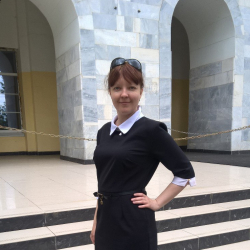Конспект урока английского языка.
Учитель: Шульга Кристина Владиславовна.
Класс: 8.
Тема: We’re a Part of the Universe. Работа с текстом. Чтение с выбором. Грамматический текст.
Цель урока: формирование лексических навыков по теме «Галактики», формирование навыков поискового чтения.
Образовательная: развивать и совершенствовать умение читать с целью общего и детального понимания содержания текста, формировать лексические навыки чтения; обеспечить условия для закрепления знаний, умений навыков поискового чтения, развивать умения групповой и индивидуальной работы, совершенствовать грамматические навыки по теме «Определенный артикль»;
Развивающая: развивать произвольное и непроизвольное внимание, память, мыслительные операции, языковую догадку, речевую деятельность учащихся;
Воспитательная: формировать интерес к изучению иностранного языка, познавательный интерес через приобщение к культуре страны изучаемого языка, воспитывать инициативу и самостоятельность в учебной деятельности.
Средства обучения:
Ход урока.
1. Организационный момент. Приветствие. (2 мин.)
Good morning, dear pupils! Who is absent today?
Good morning, teacher!..
Today we are going to continue our astronomy lesson and learn some information about galaxies and read the text in your book.
2. Повторение пройденного материала, проверка знания грамматики и домашнего задания
(5 мин.).
But first of all let’s revise our grammar that we learnt at the previous lesson and check your home exercises.
When do we use the definite article? Когда мы используем определенный артикль?
1) when there is only one of something (unique): the Sun, the Moon, the Earth, the Galaxy, the Universe, the Solar System.
2) the sky/ the country/ the sea
3) space (without the) = “place far above the Earth where there is no air”
(Ученики отвечают устно, учитель на доске записывает схематично:
1) something unique: the Sun, the Earth, the Universe
2) the sky/ the country/ the sea
3) space, in space
And now let’s check your hometask. Open your workbooks.
(Проверка домашнего задания. Ex.39 p.14.)
3. Проверка знаний, написание теста по теме «Определенный артикль» (5 мин.).
And now we are going to write some test.
(Учитель раздает задание. Учащиеся самостоятельно пишут тест.)
4. Чтение и перевод текста. (12 мин.)
And now we are going to work with text “Galaxies” from your Student’s Books. Open them on page 14. Ex. 40. Read and translate the task.
Decide whether these sentences are true or false.
(Ученики по очереди читают и переводят предложения и отмечают, какие высказывания, по их мнению, истинные, а какие ложные.)
1. F.
2. T.
3. T.
4. F.
5. F.
And now ex. 41. Read the task.
Read the text and find out if your answers were right.
(Ученики читают и переводят текст по очереди. Слова, которые вызывают наибольшие трудности при чтении и переводе учитель записывает на доске. По окончании перевода текста класс вместе с учителем зачитывает эти слова ещё раз.)
5. Работа с новой лексикой (7 мин.).
(Учитель зачитывает слова и фразы из текста на русском языке. Ученики должны найти в тексте английские эквиваленты. Кто находит первым поднимает руку и зачитывает. Учитель записывает правильные варианты на доске. Ученики записывают слова и фразы в тетрадь.)
All the stars we see in the night sky – все звезды, которые мы видим в ночном небе
Travel through space – путешествовать по космосу
Such a group - такая группа
is called (a galaxy) – называется галактикой
for each human being - на каждого человека (человеческое существо)
Like a huge disc – как огромный диск
In the middle – по середине
In fact - фактически, на самом деле
To be seen with the naked eye – быть видимым невооруженным глазом
Huge ‘starships’ – огромные космические корабли
To travel with many people on board – путешествовать с большим количеством людей на борту
A suitable planet – подходящая планета
Some of these people – некоторые из этих людей
Begin a new life – начинать новую жизнь
To investigate the Universe – исследовать Вселенную
Task: make up your own sentences using these phrases.
Задание: придумать и записать 1-2 предложения, используя эти фразы.
(Ученики работают самостоятельно 2 минуты, затем вслух зачитывают предложения.)
6. Проверка усвоения текста (7 мин.)
Answer the question:
Which fact from the text is the most interesting for you?
(Ученики зачитывают самые интересные факты из текста.)
And now ex. 44 p. 15. Use the information in the text to make notes under the following headings.
Сейчас мы с вами сделаем это упражнение, но самостоятельно, письменно на карточках, которые я вам раздам. Это будет наша проверочная работа на понимание текста.
Учитель раздает ученикам листочки-карточки для заполнения информации с распечатанными предложениями из упражнения. Ученики находят соответствующую информацию в тексте и записывают в карточку:
|
The Galaxy or the Milky Way:
The number of stars in the Galaxy:
The shape of the Galaxy:
Other galaxies:
Travel to other galaxies:
|
7. Дополнительные задания: упр. 12 стр. 34-35 (5 мин.)
8. Завершение урока. Выставление оценок за урок (2 мин.).
Домашнее задание: упр. 7 стр. 11 (Workbook), упр. 13 стр. 35 (в учебнике), выучить новые слова.
Задания для преуспевающей ученицы:
После того, как класс прочитал и перевел текст:
1. Find out English equivalents:
все звезды, которые мы видим в ночном небе -
путешествовать по космосу -
такая группа -
называется галактикой -
на каждого человека (человеческое существо) -
как огромный диск -
по середине -
фактически, на самом деле -
быть видимым невооруженным глазом -
огромные космические корабли -
путешествовать с большим количеством людей на борту -
подходящая планета -
некоторые из этих людей -
начинать новую жизнь -
исследовать Вселенную -
2. Make up your own 3-4 sentences using phrases above.
3. Which fact from the text is the most interesting for you? Write in down.
4. Use the information in the text to make notes under the following headings.
|
The Galaxy or the Milky Way:
The number of stars in the Galaxy:
The shape of the Galaxy:
Other galaxies:
Travel to other galaxies:
|
5. Ex. 10, 12 p. 34-35 (Student’s book).
6. Ex. 5 р. 9







































